285 vs 295 Tires
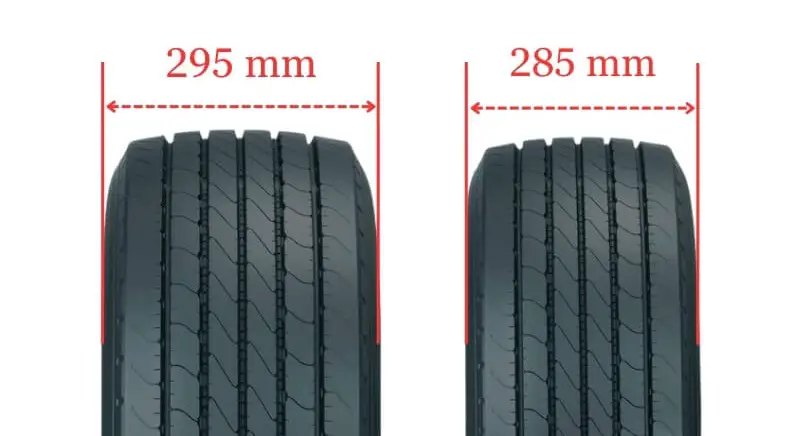
The primary difference between 285 and 295 tire size lies in the tread width, measured in millimeters. The 295 tire has 10mm wider tread than the 285 tire. The 285 tire has a tread width of 285 mm, while The 295 tire’s tread is 295 mm wide.
285 vs 295 Table
This comparison table provides a quick and easy way to understand the differences between two tire sizes.
| Feature | Tire Size 285 | Tire Size 295 |
|---|---|---|
| Width in mm | 285 | 295 |
| Width in inches | 11.2 inch | 11.6 inch |
| Ground Clearance | Slightly less | Slightly more |
| Fuel Efficiency | Slightly better | Slightly worse |
| Ride Comfort | Smoother on-road | Smoother off-road |
| Aesthetics | More aerodynamic look | More aggressive look |
| Handling | More responsive | More stable |
| Noise Levels | Quieter on smooth roads | Noisier tread |
| Durability | Potentially longer tread life | Withstands impacts better |
| Traction | Good on pavement | Better in mud/snow |
Ground Clearance
The 295 tire’s larger overall diameter results in slightly more ground clearance, which can benefit off-road driving. However, it may also cause a lower speedometer reading than the 285 tire size.
Conversely, the 285 reduced clearance could increase the chances of scraping the undercarriage on obstacles.
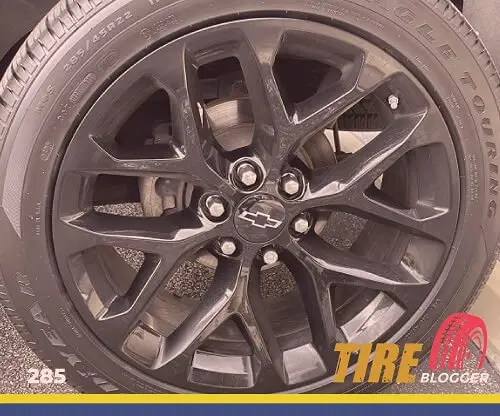
Gas Mileage
With a minor contact patch, the 285 tire offers marginally better fuel efficiency over the 295. The lighter rotational mass also contributes to efficiency benefits for the 285 tire. However, the difference is generally minor between these two sizes.
Ride Comfort
The 295 tire’s extra sidewall height provides a smoother ride over rough terrain due to increased shock absorption.
But on smooth highways, the 285 generates less road noise for a quieter, more comfortable cabin experience. Overall comfort depends on driving conditions.
Aesthetic Look
The slightly wider 295 tire visually gives a more aggressive, rugged look, especially on trucks or SUVs.
However, the 285 maintains a smoother aesthetic that optimizes aerodynamic efficiency. Personal preference plays a key role here.
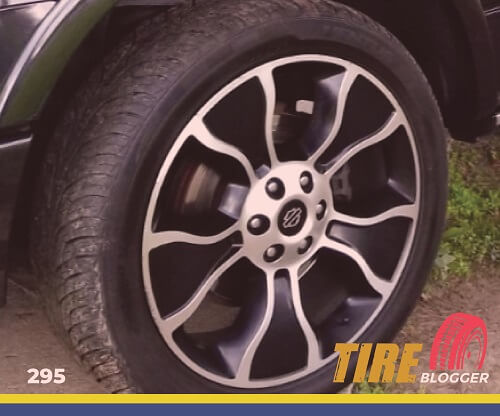
Handling & Stability
The 285 tire offers quicker steering response and nimble handling on paved roads. But the 295 provides added stability and traction for off-road driving situations where loss of traction is a concern.
Noise & Vibration
With a wider tread, 295 tires generate more road noise, especially on coarse road surfaces. The 285 provides a quieter ride on smooth roads but transmits more vibration from irregularities.
Durability & Wear
The 295 larger size may better withstand impacts, but the added weight could increase wear on suspension components. Even wear across the tread may be easier to achieve with the 285 tires.
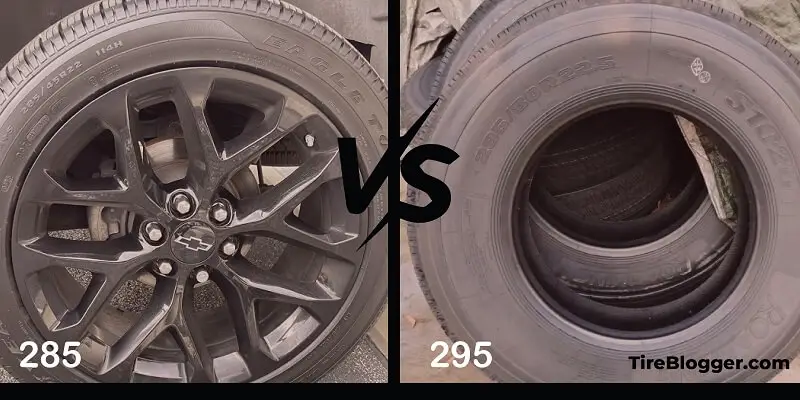
Adverse Condition
The wider 295 tire delivers superior traction in deep mud or snow, while the 285 can cut through snow more efficiently. But on sheer ice, the narrower tire may grip better.
Difference Between 285 and 295
Tires The main difference is the section width, with 295 tires being approximately 10mm wider than 285 tires. This affects various performance aspects such as handling, grip, and fuel efficiency.
Can I Use 285 Tires Instead of 295?
Yes, it’s possible to replace 295 tires with 285 tires. Their ideal rim width ranges overlap, making the switch suitable. However, ensure the aspect ratio and rim diameter match your current setup, or keep the overall diameter difference within 3% to maintain vehicle performance.
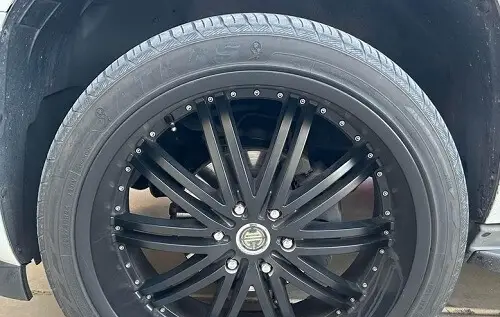
Can I Use 295 Tires Instead of 285?
Yes, you can use 295 tires instead of 285. The ideal rim width ranges for both sizes overlap, allowing for compatibility. Remember to match the aspect ratio and rim diameter, or keep the overall diameter difference within 3% to avoid affecting vehicle performance.
Can I Put 285 Tires on 295 Rims?
Yes, you can put 285 tires on rims designed for 295 tires. The ideal rim width ranges for both tire sizes overlap (9.0-10.5 inches), ensuring proper fitment and performance. Match the aspect ratio and rim diameter for optimal results.
Can I Put 295 Tires on 285 Rims?
Yes, you can put 295 tires on rims designed for 285 tires. The ideal rim width ranges for both tire sizes overlap (9.0-10.5 inches), allowing for proper fitment. Ensure the aspect ratio and rim diameter match for best performance.
Our Observation
After comparing the nuances between 285 and 295 tires, I’ve concluded that both serve unique purposes. For my needs as a daily commuter who enjoys weekend camping trips, the 295 tire seems the better option.
The slightly larger size provides a smoother ride over rugged terrain during my outdoor adventures. And while I may sacrifice some handling and efficiency on the highways, the difference is quite minor—a tradeoff I’m willing to make.
With its beefier aesthetic and traction advantages in mud, snow, and other adverse conditions, I’m convinced the 295 tires can handle my lifestyle. Of course, personal preferences and driving needs should dictate each driver’s choice between these two capable sizes. But for me, the 295 is the ideal fit.

Meet Caitlin McCormack, a Tire Size Expert and Blogger Passionate About Everything Related to Tires. With Years of Experience in the Tire Industry, Caitlin Has Become an Expert in Tire Sizes and Their Impact on Vehicle Performance.
